Lance Pearce – 1 October, 2014
In moving through 'Can Do Academy' one is repeatedly confronted by the exhibition's most striking feature - sections of plasterboard that have been seamlessly fitted into the gallery walls, and whose surfaces bear the traces of extensive use. They look like segments of wall skilfully excised from art schools or artist studios in which painting or printmaking has taken place. The display of these grubby, pared-back boards is contrary to their role as working surfaces, replete as they are with random leftovers.
“Being past, being no more, is passionately at work in things.”
Walter Benjamin, The Arcades Project
In the Woody Allen film Hannah and Her Sisters (1986) the architect David takes Holly and April on a drive around Manhattan to show them his favourite buildings. The quick tour brings into focus a stylish, charming New York: the dramatic art deco façade of the Chrysler Building, the terra-cotta ornamentation of the Alwyn Court building, the picturesque Tudor Revival housing of Pomander Walk. David comments to his rapt acquaintances, “People pass by vital structures in this city all the time, and they never take the trouble to appreciate them.” Three people passionately discuss buildings. But on the whole, the architectural tour takes place in the car, in a physical disconnection from the urban environment.
Richard Sennett argues in Flesh and Stone (1994) that contemporary architecture has dishonoured the body: in his view, modern buildings are bland and sterile resulting in a “sensory deprivation.” The problem is more than a “professional failure” in which modern architects and city planners neglect the “human body in their designs”; the crisis has “larger causes and deeper historical origins.” Other factors, Sennett claims, such as automobile speed, fragmented urban space, and the rapid pace of technological development “has had a large effect in weakening the sense of tactile reality and pacifying the body.”
Such are some of the reflections inspired by Can Do Academy, Fiona Connor’s first solo exhibition at Hopkinson Mossman’s current Putiki Street space. Connor is well known for her replicas of spaces and things. Each replication is a faithful double of the original structure, often made with industrial processes to match the original construction method. A recent case in point is her exhibition Wallworks (running concurrently with Can Do Academy), the title of which refers to her display of artworks from the Monash University Collection, and partial reproductions of the particular walls on which they circulate around the university’s campuses. By copying sections of the university’s walls, and thus troubling the notion of a familiar location, Connor makes typically overlooked architecture highly visible.
In moving through Can Do Academy one is repeatedly confronted by the exhibition’s most striking feature - sections of plasterboard that have been seamlessly fitted into the gallery walls, and whose surfaces bear the traces of extensive use. They look like segments of wall skilfully excised from art schools or artist studios in which painting or printmaking has taken place. The display of these grubby, pared-back boards is contrary to their role as working surfaces, replete as they are with random leftovers. In the smaller gallery, the messy traces of an artist’s hand mark a wall and gives form to four rectangular ‘negative spaces’. The row of blank spaces attests that paintings on paper were made taped to the wall and then removed. The segment of plasterboard has a time worn quality, as all of the works in this exhibition do. Connor is evoking a feeling for specific places in her viewer, without necessarily telling you what any particular work is, or where it originates.
Similarly, Can Do Academy #4 (all works 2014) with its passel of marks indexes the removal of a notice board and two sheets of paper. Along with the subtle grey smudging and paint splatter, the wall piece also features a light switch, thermostat and four distinctive resin-like blotches. Holes, smears, scratches and plastic scraps adorn the wall displaying signs of wear and tear. Beyond the familiarity of damaged workspaces, what is of interest is the paradox at the heart of the work. This is fragile, vacated art, acceding to human pressure, yet there’s solidity to these works in their embedded state that’s highly compelling.
Nearby, Can Do Academy #3 allows an uninhibited view of a wall-mounted ceramic sink complete with plumbing. The surrounding wall is overlaid with a riot of paint drips and splatters; a large pinkish smear evidences a failed attempt at cleaning. There is the afterimage of a removed hand dryer. Tucked beneath the sink are four fruit stickers. This simple combination conflates the processes of digestion and the mechanics of plumbing. Connor’s invocation of the human body, primarily through its absence, calls to mind the exhibition of Francis Bacon’s studio, relocated from London to Dublin, which includes not only its disorderly contents (including the dust) but the walls, doors, floor and ceiling.
Connor has also engaged with the local features of the gallery’s architecture; a choreography of touch to create human traces. At the rear of the gallery, Can Do Academy #6 consists of an installed hollow-core door, a temporary substitute for the gallery’s own door. The surface of the door has been artificially aged by virtue of the artist’s repetitive painting, puncturing, and scuffing, so as to hasten the effects of time - grey paint near the door lock mimics hand smudges, painted lines near the bottom of the door imitate the aftermath of compulsive kicking or furniture moving. The grimy, battered door no longer disappears in its anonymous functionality - its invisibility - and becomes instead highly conspicuous. The work alludes to the habitual distraction and negligence at the heart of much human activity. As Theodor W. Adorno in Minima Moralia (1951) remarked, we have lost the ability “to close a door quietly and discreetly, yet firmly.”
The recurring forms, materials and references in Connor’s installation do not link directly to any singular site. Rather, they are part of a vocabulary in a synecdochal evocation of personal and cultural memories and creative enthusiasms. The viewer’s experience of the work is determined less by its particularity than by its familiarity; the paint-splashed surfaces invoke multiple settings that are absent, yet nonetheless, make their effects felt. In its raw tactility, it points to both past and future activity, appearing to be both unfinished and untimely.
Lance Pearce
Recent Comments
John Hurrell
One of the delightful aspects of this show, I think, is its sense of fun - especially in terms of ...



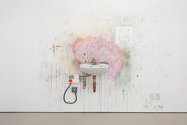
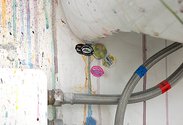
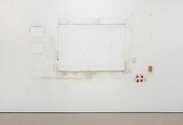
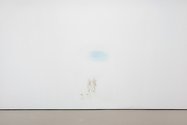

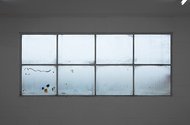
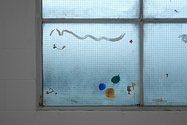
 Two Rooms presents a program of residencies and projects
Two Rooms presents a program of residencies and projects Advertising in this column
Advertising in this column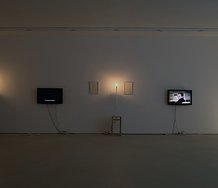

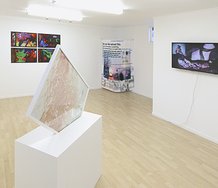
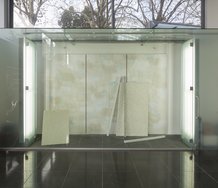
This Discussion has 1 comment.
Comment
John Hurrell, 6:28 p.m. 1 October, 2014 #
One of the delightful aspects of this show, I think, is its sense of fun - especially in terms of 'conversations' with other artists. Richard Maloy's photographs of Elam desktops seem a deliberate reference, as is Daniel Malone - via Connor's use of fruit labels under the sink. There's an infectious playfulness, a salute, a colleaguial tip of her hat to her peers.
Participate
Register to Participate.
Sign in
Sign in to an existing account.